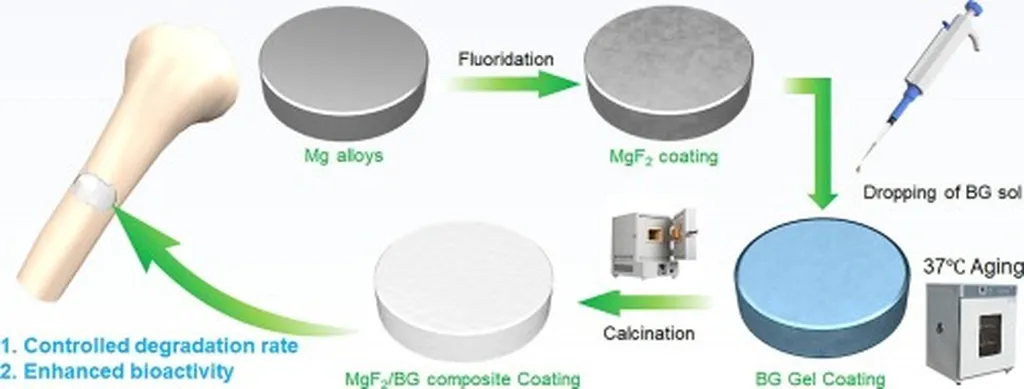In a significant stride towards enhancing the durability and functionality of magnesium alloys, a team of researchers led by Chang Liu from the China CAS Key Laboratory of Marine Environmental Corrosion and Bio-fouling has developed a novel composite coating that promises to revolutionize the energy sector. The study, published in the journal *Corrosion Communications* (translated as “Anti-corrosion Communication”), delves into the multifaceted properties of MG-Nb2O5-MgO composite coatings, offering a glimpse into a future where materials are not only resistant to corrosion but also conductive and capable of absorbing waves.
Magnesium alloys, known for their lightweight and high strength-to-weight ratio, have long been sought after in various industries, including automotive and aerospace. However, their susceptibility to corrosion has been a significant impediment to their widespread use. The research led by Liu addresses this challenge head-on by introducing a composite coating that significantly enhances the corrosion resistance of magnesium alloys.
The team employed a scraping method to fabricate MG-Nb2O5−MgO composite coatings on the surface of magnesium alloys, based on MgO@Nb2O5 micro-arc oxidation film. Through a series of sophisticated analyses, including surface morphology and microstructure analysis, electrochemical tests, and wave absorption performance analysis, the researchers uncovered the remarkable properties of the composite coatings.
“Our findings reveal that the MG-Nb2O5−MgO composite coating not only reduces surface pores and cracks but also enhances the corrosion resistance of magnesium alloys,” Liu explained. The study demonstrated that as the thickness of the MG coating increased, so did its conductivity, with optimal corrosion resistance achieved at a thickness of 10 μm. Furthermore, the coating exhibited measurable wave absorption performance at a thickness of 20 μm.
The implications of this research for the energy sector are profound. The enhanced corrosion resistance and conductivity of the composite coatings could lead to the development of more durable and efficient energy storage systems, such as batteries and supercapacitors. Additionally, the wave absorption properties could find applications in electromagnetic interference shielding and stealth technology, further broadening the scope of potential uses.
As the world continues to seek sustainable and efficient energy solutions, the development of advanced materials that can withstand harsh environments and perform multiple functions becomes increasingly crucial. The research led by Liu represents a significant step forward in this direction, offering a glimpse into a future where materials are not only robust but also multifunctional.
In the words of Liu, “This study opens up new avenues for the application of magnesium alloys in various industries, particularly in the energy sector. The enhanced properties of our composite coatings could pave the way for more efficient and durable energy storage systems, contributing to a more sustainable future.”
As the research community continues to build upon these findings, the potential for innovation in the field of materials science and engineering is vast. The MG-Nb2O5-MgO composite coatings developed by Liu and his team could very well be the catalyst for a new era of advanced materials, shaping the future of the energy sector and beyond.

